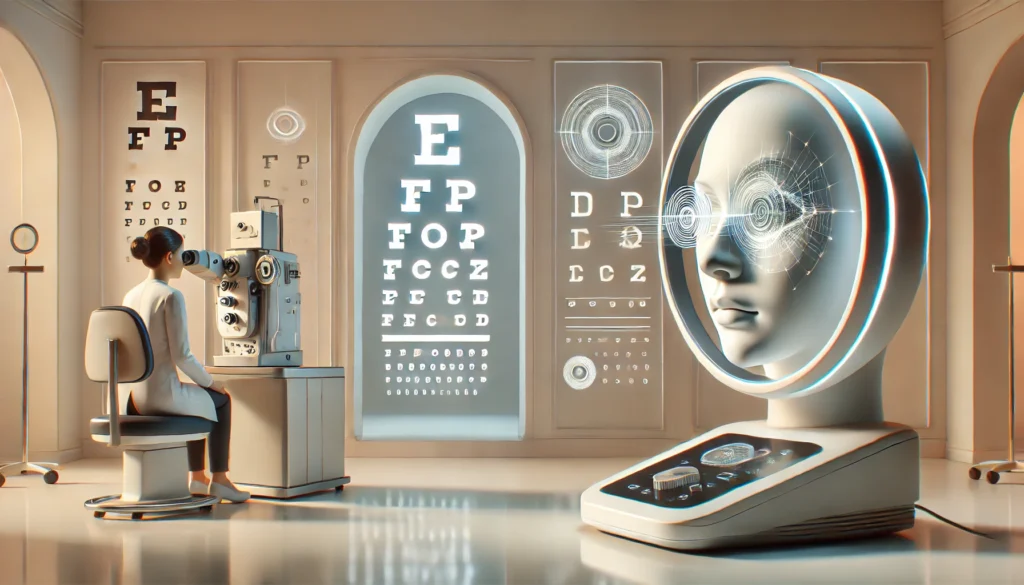Eye tests are essential for eye and overall health, but they’re often an afterthought when it comes to monitoring well-being. Millions of adults are at high risk for vision loss, yet 40% of them in the US alone hadn’t seen an eye doctor or had an eye exam in 2023.
Without regular tests, it’s much harder to track vision changes, spot symptoms of eye and health conditions, and get proper and timely treatment. Many people may not be aware that they have an eye disease, as they initially progress slowly and subtly. By the time they’re noticed, it’s much more challenging to address. Though many understand the importance of eye exams, the process can be intimidating, time-consuming, and costly. Advancements in technology are transforming the process, showcasing how innovations can enhance efficiency, accuracy, and comfort for a better experience. Here are some of the top eye test innovations that are revolutionizing eye care:
Improved Retinal Scans
Beyond assessing visual acuity, eye tests can reveal much about a person’s eye and overall health. New technologies are making it easier to detect eye conditions like macular degeneration and glaucoma, along with issues like high blood pressure, diabetes, and tumors, which may have gone unnoticed otherwise. The Optomap scanner from Optos can provide a clearer picture of eye health compared to current tech. Traditional retinal scans capture about 15% of the retina, while the Optomap can capture 82% in a single image, growing to 97% when montaged. In the UK, Boots Opticians is adopting the technology to provide people with easier access to comprehensive eye care. Vision Direct highlights Boots as a location where people can get a free eye test funded by the NHS if eligible, helping break down barriers to care.
The Optomap scan is integrated into the advanced ‘ultimate eye test,’ along with an optical coherence tomography scan. By incorporating the technology into eye exams, people can spot undiagnosed eye and health problems, empowering them to take measures to slow the progression, find the appropriate treatment, and enhance lifestyle to maintain well-being.

(Image Source: https://img.freepik.com/free-photo/high-angle-woman-getting-her-eyes-checked_23-2150758574.jpg)
Eye Exam Headsets
Eye exams can be labor-intensive for eye doctors and time-consuming for patients, making the process rather strenuous. Headsets like the Radius XR aim to simplify the process to make it easier for both parties while still aiding in the diagnosis of eye diseases. While many headsets on the market are used for virtual reality experiences and gaming, the Radius XR is a medical-grade instrument that can combine tests and educational resources in one device.
Minimal staff guidance is required, freeing eye care professionals to allow them to focus on other important tasks. Since the headset is portable, patients can even get tested in the waiting room. With the headset, practitioners can start the experience with an introductory video to help the patient feel more prepared and knowledgeable about certain treatments and procedures. The headset can also perform a visual field test, saving time and space instead of having to navigate a clinic or sit in front of a machine for a long time. This can be especially beneficial for individuals with mobility issues, as they can get started with the eye exam without having to move far.
AI-Powered Screenings
Artificial intelligence (AI) has been revolutionizing healthcare by boosting speed and efficiency in diagnosing diseases. It can easily spot problems and symptoms that are difficult for humans to detect, making for a more accurate and comprehensive diagnosis. The benefits of AI have also extended to eye tests, aiding in detecting and diagnosing eye conditions like diabetic retinopathy.
The AI algorithm used by the Tarzana Treatment Centers in the US can perform eye exams using pictures taken by a retinal camera. Results can be administered in minutes; patients can save time and money by not having to make additional appointments. It can also be used with little training or supervision, allowing less experienced staff to learn how to use and manage it. The benefits can encourage more people to get eye tests to detect diabetic retinopathy, as it’s more convenient and instant results may motivate patients to get treatment sooner.

(Image Souce: https://images.pexels.com/photos/5765830/pexels-photo-5765830.jpeg)
At-Home Tests
A common barrier to eye tests is accessibility, as patients may have to travel far to clinics or struggle with costs. This prevents them from getting an eye exam regularly, putting eye health at risk. Vision care company Visibly is bringing eye tests to patients through an at-home vision test. The Visibly Digital Acuity Product uses a mobile device and a computer to test visual acuity. The computer displays optotypes, symbols, or letters designed for vision testing, and patients input their responses on the mobile device. After the short test, the results are sent to eye care specialists who can interpret the results and provide guidance on what to do next. While the vision test doesn’t provide a comprehensive screening of eye health, the technology can be a stepping stone to connect patients to professionals and get the proper care, which may not have been possible before. It’s a convenient and affordable solution that can encourage patients to better monitor and care for their vision and eye health.


